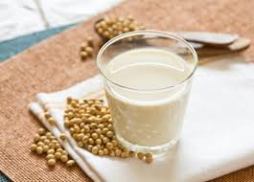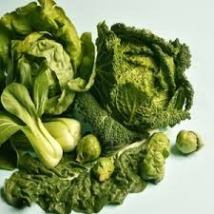These days everyone seems to be looking for an alternative.
When it comes to our eats, some people do require alternatives because of allergies or intolerances. For others, this 'search' for the perfect alternative appears to have stemmed from a world that constantly aims to promote a new dietary fad, trend or superfood.
Promotion of certain foods and lifestyles by celebrities and ‘health experts’ has made people feel that they need an alternative to what they have been doing for many years. Often doing well – for many years. So when it comes to milk (and OMG the MANY MANY options available), how do the alternatives stack up against cow’s milk, and do our kids in particular really need an alternative?
The most popular cows milk alternatives appear to be soy, rice, coconut and the ever-popular almond milks, especially with the boom of recent dietary trends. Whatever your reasons for using one of these alternatives, I think its important that we highlight the differences in nutritional value between these milks so that you know what your children are getting, and what they may be lacking.
Cows Milk
First and foremost, lets take a quick look at regular cows milk. We have been drinking it for years, providing us with a neat package of readily absorbed calcium, vitamin D, protein, carbohydrate, vitamin B12, riboflavin, magnesium, zinc, phosphorus and potassium - offering many health benefits beyond keeping our bones healthy and strong. It's safety when it comes to heart health was questioned for many years, however new research shows that the fat in milk does not impact on our weight or cardiovascular disease risk. It's got a good punch of protein and some low GI carbs to keep you feeling full. If your child doesn't have an allergy or doesn't need to avoid it for cultural or moral reasons, then there is really no need to find an alternative.
If your child has a lactose intolerance (trouble digesting the natural carbohydrate in milk) you can now get tasty, fresh and long-life lactose free cows milk from supermarkets and cafes.
Soy milk
if you prefer soy milk as an alternative for your child, first of all it’s important to choose the calcium-fortified stuff (added calcium). They will have similar calcium, fat and protein contents per serve to cow’s milk, making fortified soy an ideal alternative.
There is still a lot to learn about the long-term safety of soy in children beyond infancy. This uncertainty is due to limited research (the same can be said for many foods in our supply), however certain populations have been consuming large amounts of soy throughout the life span for centuries, without any adverse effects. I don’t think soy is something children need to avoid but like all things nutrition, moderation is the key, with the Harvard Medical School suggesting children drink one or two glasses of soy milk a day if soy is there preference.
Almond & Rice milks
A handful of almonds provides a boost of many essential nutrients including protein, fibre and healthy fats. However, when we grind them down and add water to make almond milk, these nutritional qualities do not translate. Just like rice milk, almond milk pretty much has no natural calcium and not all almond and rice products are fortified. Even if they are, they are generally much lower in calcium than cow and soy milks with the absorption of the calcium being questioned. The bottom line, if your children do choose almond and rice milks look for different ways to get more calcium.
Protein is another important nutrient lacking in almond and rice milks compared to cow and soy milks. This means that children relying on almond and rice milks may be at a higher risk of an inadequate protein intake. This will of course negatively impact on their growth and development. If your child does predominantly have these milks, chat to an Accredited Practising Dietitian to ensure that they are getting enough protein from their whole diet.
In some situations adults should also assess their protein intake when relying on almond and rice milks. For one, protein keeps your feeling full. So when a switch from cows milk to rice or almond milk is made at breakfast time for example, adults often report that there appetite increases between meals. Athletes and active adults will also need to ensure that they are meeting increased needs for protein and timing this right for optimal muscle recovery – having a glass of almond milk is not the same as a glass of cows milk when it comes to nutrients for recovery!
Coconut milk
Although coconut milk is great to use in cooking, just like rice and almond milks, it should not be used as a cow’s milk alternative in your child’s diet. Coconut milk is low in protein and calcium and high in kilojoules. Save it for those nourishing curries or as an occasional snack.
The verdict...
Soy milk can be a great cow’s milk alternative for kids (providing similar amounts of available protein and calcium), meaning you can swap like for like servings to meet requirements. However rice, almond and coconut milks are not. If your child still includes these milks in their diet just ensure that they are receiving adequate amounts of protein, calcium, vitamin D, vitamin B12 and riboflavin elsewhere. You may need to chat to an Accredited Practising Dietitian.





